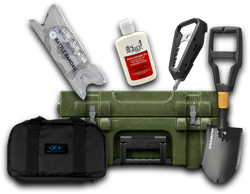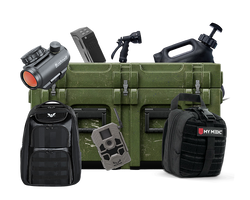
Survival Knots to Know
Have you ever heard that rope is an essential survival gear to keep with you? More importantly when you are going for an outdoor adventure. A rope is lucrative survival gear only when you know how to utilize it properly. An improperly tied rope can turn out to be a disaster. For example, an inappropriate tarp shelter can untie and fall on you in the middle of a thunderstorm. Similarly, the boat you tied with a rope can also get loose and float downstream.
There are numerous ways to tie a survival knot properly. It is hard to learn how to tie all these survival knots. However, you should take some time to learn the most important of these survival knots for ensured safety.
Best survival knots everyone should learn.
Here we have enlisted some of the best survival knots that you should learn. We ensure to bring the skills that are practical, simple, and easy to learn and can benefit you in survival.
So, here we go:
Clove Hitch
The clove hitch is arguably one of the most versatile knots. This is one of the most commonly used survival knots, as it forms the foundation for other knots, e.g., lashing. However, this is a kind of knot suitable for temporary uses. It will be secure only when you have load-pulling on both sides. With the greater load on both sides, you can make the clove hitch knot securer.
You can use this type of survival knot to:
- Hang a bear bag
- Secure your rope to a tree
- Secure survival shelter
Thumb Knot aka Overhand Knot
A Thumb knot is another primary knot that provides a base for various other survival knots. You can use this knot as a stopper to secure the rope's end from fraying if you need a knot at the rope’s end. The overhand knot also comes up with a jamming capability, but when tied tightly against another knot or any object.
To tie this knot, you need to create a loop. Then pass one of the rope’s ends through this loop and pull that to tighten and secure.
Reef Knot aka Square Knot
A square knot, aka reef knot, is pretty straightforward to tie. It can also benefit you due to being flat when properly tied. This survival knot is suitable for different purposes, especially where a protruding knot can’t work effectively.
However, it is highly important not to use this survival knot for tying critical items, as it isn't secure enough. For example, you can use this knot to tie a rope around any object. Whereas never use it in the load-bearing situation.
To tie a square knot:
- Take your rope’s two ends and cross right one over left.
- Tuck the right end of the rope behind the left one.
- Now bring both ends of your rope back towards each other.
- Now cross left end over right.
- Tuck the left end of the rope behind the right.
Pull both ends of the rope to secure this survival knot.
Sheer Lash, aka Shear Lash
Do you want to secure two poles together for any purpose? If both poles are load bearing, you must go with a sheet lash knot for survival. You can also use this survival knot to create a long pole by securing two end-to-end poles with ease.
Additionally, you can use shear lash to fix broken poles, secure a broken pole, or make a larger pole.
Bowline Knot
This survival knot is known to be the king of knots. Even though it is of loop knot type, the easiness of tying this knot makes it more popular among others. The bowline knot is securer when used under load. However, it's easier to untie the bowline knot when you remove the load.
Most importantly, keep in mind that tying an inappropriate bowline knot is also easier. You can use a bowline knot for different purposes. For example:
- To make a loop at the end of your rope
- To link two ends of the rope together
- Securing your trap
- To fasten a line to your preferred pole
- For climbing
To tie a bowline knot, create a loop with the rope's end. Pass this end of your rope through the loop. Move it around your rope’s standing part and pass it back through the loop. Pull both ends of the rope to tighten.
The Sheet Bend:
Rather than tying an inappropriate and unsafe square knot, it’s better to learn how to tie the sheet bend. This is an effective survival knot to tie two different ropes, even if these are of different sizes. However, if possible, ensure to use a thicker rope to create the loop of the sheet bend. Then use the thinner rope to tie in.
Even more, are your ropes of significantly different thicknesses? Then you can enhance their security by making thinner rope’s two turns around the loop.
There are numerous situations in the backcountry where you can use sheet bend as the best survival knot. For example:
- To mend broken lines
- To create a longer length for hauling something
- You can also use a sheet bend to anchor the corner of the trap securely, more particularly when rigging an ultra-light shelter.
Flemish Knot aka Figure 8 Knot
This is another type of survival knot that jams securer when tied with a load, just like an overhand knot. However, it is easier to untie as compared to others. The figure 8 knot is sometimes more preferred survival knot than overhand because it’s stronger, securer, and larger.
Also, it is the basic knot to tie the figure eight on the loop and figure-8 follow-through.
The Flemish knot is also considered an easy and quick stopper to avoid rope slipping. It can also help in climbing and sailing. The major uses of the Flemish knot include jewelry making, decorations, and rigging.
Final thoughts
So, these are some survival knots; if you learn them, you will be ready for anything you may need in an emergency. Therefore, learn these knots skills below and have better survival skills in an emergency.
Image by Engin Akyurt from Pixabay
Share this article








